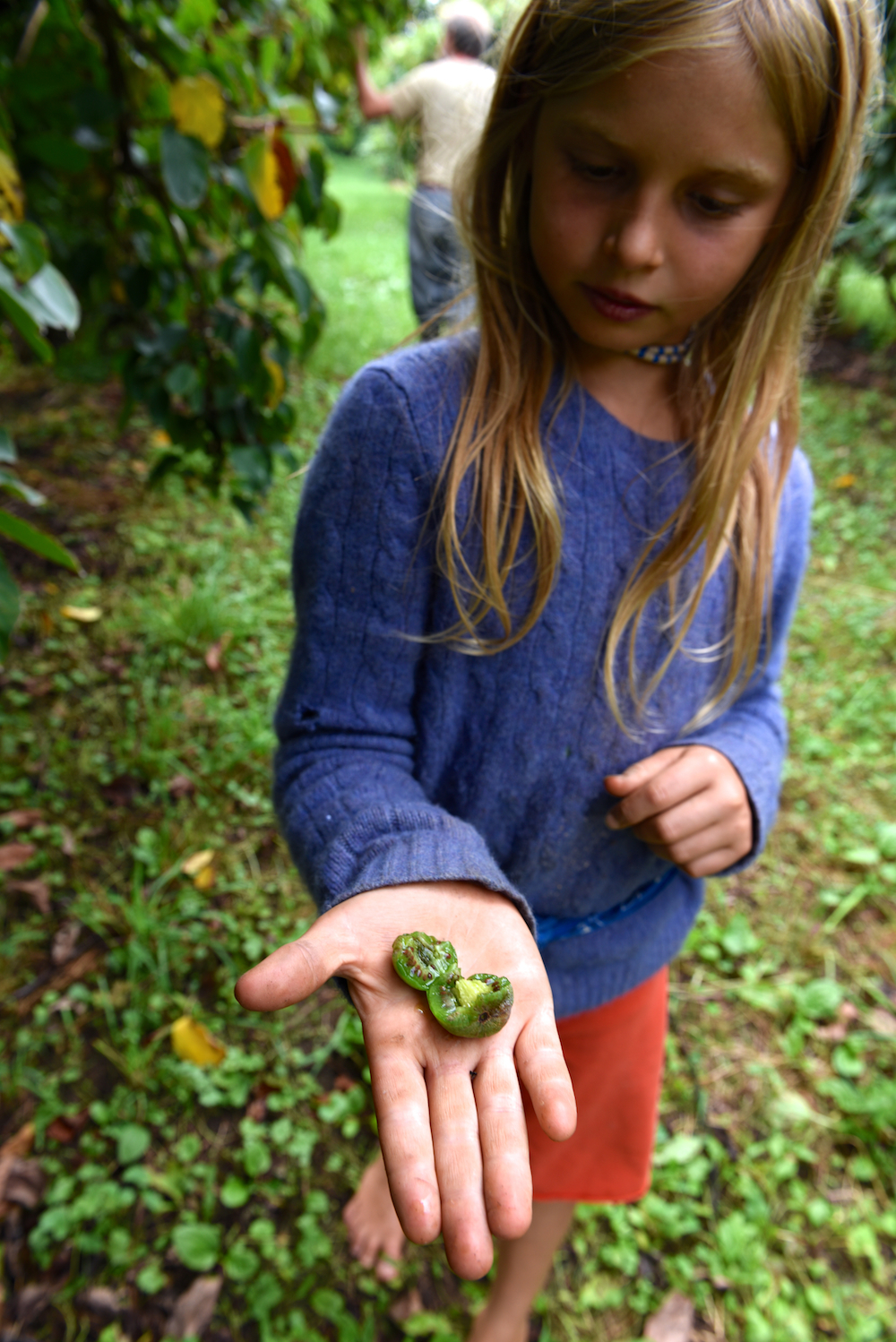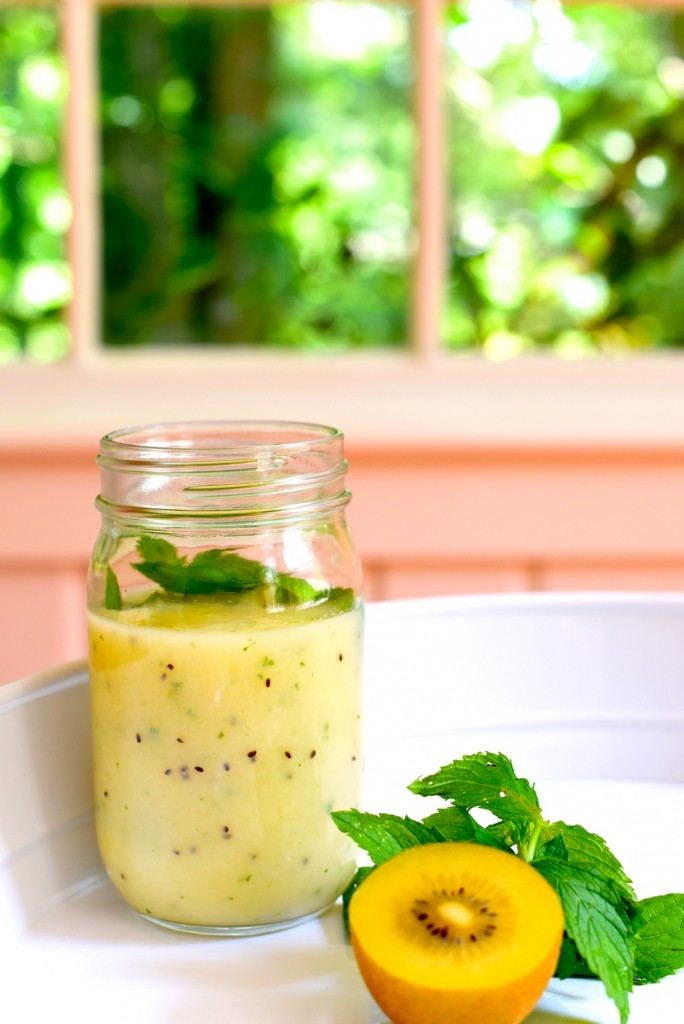Kiwi Berries Grace the Fall Harvest
/From China to New Zealand on 80 acres
 From Edible DC Fall 2014. Words and photographs by Shulie Madnick, special to Edible DC.
From Edible DC Fall 2014. Words and photographs by Shulie Madnick, special to Edible DC.
Growing native crops may be all the rage these days, but organic farmer Heinz Thomet likes to push those boundaries. On a visit to his farm, Next Step Produce in Newburg, Maryland, you’ll find crops that are indigenous and naturally thrive in the region—greens, carrots, onions, eggplant and tomatoes—alongside exotic crops including figs, Chinese mulberries, persimmons and kiwi berries. Thomet’s philosophy is that crop diversity sustains a year-round working farm, providing full employment to his workers rather than focusing solely on cultivating a handful of seasonal crops that supports a system of migrant workers forced to hop from farm to farm in search of work. More importantly, however, he sees it as a way to create harmony with the land and nature.
Planted 12 years ago at Next Step Produce, the hardy kiwi berries grow wild in their native China. Unlike tropical fruit, “Kiwi berries need a dormancy period,” explains Thomet. “They need four seasons and can survive even if temperatures drop to minus 20°F.” In the early 20th century, kiwi berries, known as yang tao, were brought from China to New Zealand where the name was first changed to Chinese Gooseberries and then later rebranded as kiwi, after New Zealand’s national bird, when the petite, grape-sized hairless fruit began to be exported to the United States.
The kiwi berries' hardiness was a boon to the farm this year, thriving through a cold winter that damaged the first expected fig crop, because the old wood didn’t survive the unusual polar vortex. Because figs generally fruit twice a year, Thomet was keeping a close eye on the second field crop during late summer, which seemed to be fruiting perfectly, but experience tells him that a late summer growth fig usually doesn’t fully ripen and develop enough sugars to make it to the farmers market. “The city, D.C., however, has a warmer climate,” Thomet notes on another day while working at his FRESHFARM Market stand at Dupont Circle. “Go by Restaurant Nora to see the figs growing on the old as well as the new wood,” he suggests. The iconic fig tree at Restaurant Nora, on the corner of Florida Avenue and R Street NW, not far from the farmers market, is a mature, sturdy tree that is, indeed, laden with fruit, apparently having survived the polar vortex with aplomb.
Keeping the kiwi berries healthy is now the order of business for Thomet while he waits for the figs to revive. Japanese beetles are the main pest infestation concern with the grape kiwis, so Thomet believes that healthy soil, which he supplements with calcium-rich seaweed, is key to healthy fruit, meaning that pests don’t sense their distress and latch on. The charming little clusters of grape kiwis seem to be stress-free, growing happily until their September harvest arrives. Each kiwi berry on a cluster ripens at a different rate, unlike a cluster of grapes that ripen all at the same time, so they have to be hand-harvested at their peak. Combining intellect with instinct, the Swiss-born vegan farmer, along with his wife and three daughters, continue to follow their commitment to operate their farm in harmony with nature, by using solar power and pond water irrigation to meet the needs of all their crops, from lettuce and squash to exotic fruits and ancient grains—creating a little piece of global nirvana right in southern Maryland.
Kiwi Pear Mint Smoothie
Recipe by Shulie Madnick. Serves 2.
1 pound kiwis (3 large kiwis, peeled; or 1/2 pint kiwi berries)
1 large pear, peeled and cored
Juice of ½ lime
3–4 tablespoons honey (adjust to taste)
8 small fresh mint leaves
1 cup coconut milk
Fresh mint leaves (for garnish)
Add all the ingredients, except the ice, into a food processor or a blender, and blend on high for a few seconds, until a smooth consistency is reached. Pour into two glasses and serve. Or if desired, add some ice cubes.
Note: Unsweetened plain yogurt or almond milk can be substituted for the coconut milk, as well as alternative sweeteners such as agave instead of the honey. To turn this smoothie into a protein shake, add a tablespoon of your favorite protein powder.
Shulie Madnick is a freelance food and travel writer and photographer based in the D.C. area. Her articles, recipes and photographs have appeared in The Washington Post among other publications; she blogs at foodwanderings.com.




